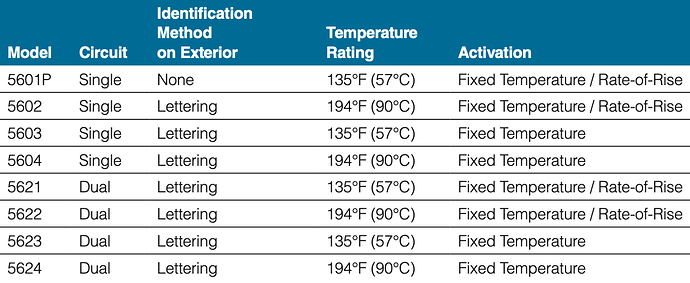The Garage & Attic Fire Alarm Monitoring Problem
Security alarm owners often want to monitor for fires in the garage or attic. Garages are a risky due electrical malfunctions, flammable liquids, and appliances. Recently, people are also concerned about fires from electric vehicles. Attics are risky for large-loss fires due to electrical malfunctions, use as storage space. The fact that you’re usually not in the attic means a fire is less likely to be noticed until it’s too late.
The problem is, you shouldn’t put a smoke detector in the garage or attic:
- They have dust and/or fumes that cause false alarms with smoke detectors.
- They get too hot or cold for the electronics to operate reliably.
It’s better to use heat detectors in garages and attics than smoke detectors. But there are still issues with most residential alarm system heat detectors.
- Most of them (i.e. the PG9936H) alarm when the temperature gets to about 135°F, which is fine for an air-conditioned room but garages and attics may reach that temperature normally.
- They still get too hot or cold for the electronics to operate reliably.
The Garage & Attic Fire Alarm Monitoring Solution
The solution is to use purely mechanical heat detectors (commonly used in commercial buildings) that alarm at a much higher temperature than those designed for air-conditioned rooms.
For example, System Sensor (Honeywell) 5600 series heat detectors have options that fit the bill.
The System Sensor 5602 is a mechanical heat detector (no electronics) that detects both high temperature and a fast rate-of-rise in temperature.
- Alarms when temperature reaches 194°F (higher than garages and attics normally get)
- Alarms when temperature increases by at least 15°F per minute
If the area you want to monitor can increase by 15°F per minute normally (when there is no fire), then the System Sensor 5604 is an alternative that only alarms at very high temperature (194°F) but not when the temperature rises fast.
The 5602 is more likely to detect a fire early (as the temperature rises) while the 5604 is less likely to false alarm. Choosing between them depends on the environment you want to monitor and your personal priority.
Connecting Wired Heat Detectors To Your Alarm System
Wired heat detectors with a high temperature threshold are a great solution for monitoring fire in garages and attics but you still need to connect them to your alarm system.
That can be a challenge for a couple reasons:
- Most residential alarm systems today, such as the Qolsys IQ Panel 4, are wireless. They don’t have an inputs to connect wired heat detectors.
- Even if your alarm system has wired inputs, the garage and attic are often far from the control panel and running wires isn’t feasible.
The solution is to convert them to wireless. There are wireless alarm sensors with auxiliary inputs that can be connected to your wired heat detectors, turning your wired heat detectors into wireless sensors.
For example, if you have a Qolsys alarm system with PowerG, the PG9945 sensor has an auxiliary input that’s compatible with System Sensor 5600 Series Heat Detectors and can be programmed as fire sensor in your IQ Panel.
For UL installations follow the PG9945 manual section on UL and ULC Residential Fire RF transmitter application: “The transmitter shall be installed using provided screws and the back tamper shall be enabled. The heat detector shall be connected to the wired input of the RF transmitter device in the same room and within 3 ft.”
Program the PG9945 in the IQ Panel 4 as (change the settings in this order):
- Sensor Input: End Of Line
- Sensor Type: Heat
- Sensor Group: 26-Smoke-Heat
The PowerG PG9945 is the lowest-cost solution for connecting your wired heat detector to your alarm system. But it only has 1 wired input. If you want to monitor many things in your garage then consider using an IQ Hardwire PowerG instead, which has 8 wired sensor inputs, is expandable up to 24 wired inputs, and has 4 PGMs (programmable outputs) that can be used to control things like gates, garage doors, lifts or lights.
